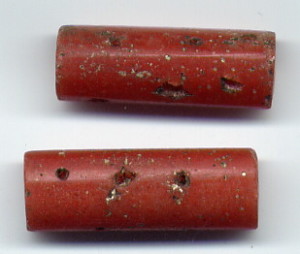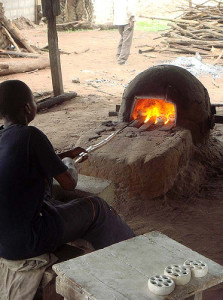Ghana is modernly considered the epicenter for recycled glass bead-making on the continent, however, they weren’t the first country in West Africa to produce powder glass beads for the Western market. Back in the 1960s, US visitors to Mauritania discovered a thriving cottage industry in the Assaba region supplying beads to some of the biggest markets in the capital – Kiffa. Despite this, Mauritanian powder glass beads didn’t come to be known as “Kiffa Beads” until the 1980s when they became collectible among US enthusiasts.
Kiffa Beads are believed to have been inspired by early Islamic beads produced in Fustat, the first capital of Egypt, as far back as 1200 BCE. These early beads featured polychromatic designs and stripes, similar to those applied to Kiffa Beads. Since waste glass was generally in short supply in Mauritania during the 60s, artisans utilized old, broken trade beads and a binder, such as saliva or gum, to create new powder glass beads without the need for clay molds.
Mauritanian Beads were produced in a wide range of shapes and sizes; the most common being a triangle with curved corners due to its being associated with fertility. Triangular beads were often decorated with a series of triangles set within one another, along with a row of eyes along the widest point at the top. The “eye” is significant to the cultures of many tribes, and is believed to protect the wearer from the envy and malice of evil persons and spirits.
Bead-making in Kiffa reached its peak between the 1960s and 1970s, however, quickly went into decline thereafter with the passing of an entire generation of artisans. The craft itself was largely forgotten until the late 1980s when a group of aspiring descendants tried to revive the art. While their efforts were largely successful, subsequent generations could not match the intricacy and elaborateness of early Kiffa Bead designs. Today, those early beads are a highly sought after collector’s item, and due to their scarcity, have been known to fetch record-breaking prices at auction.

